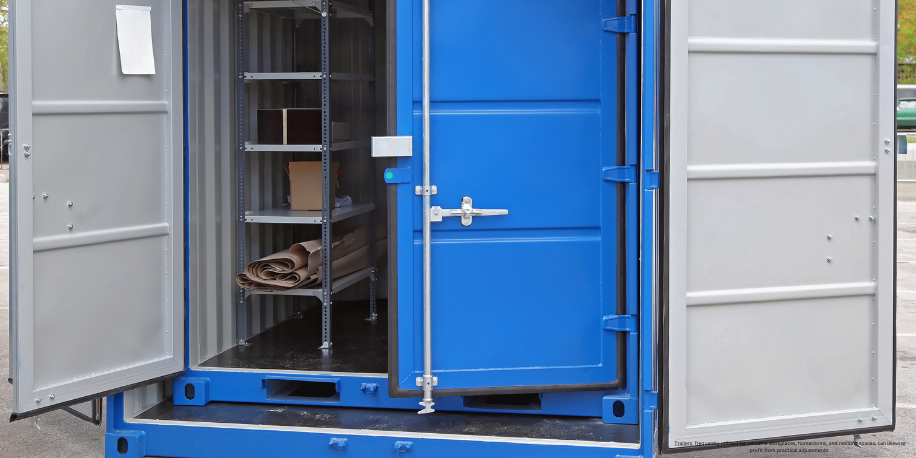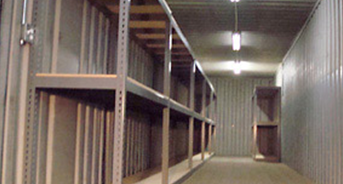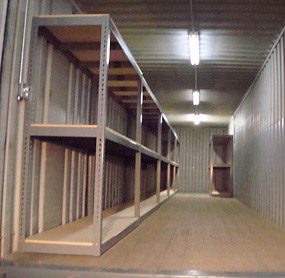In the realm of storage solutions and mobile units, shipping containers and trailers have long been favored for their durability, versatility, and cost-effectiveness. Nonetheless, a developing pattern is changing these useful designs into eco-accommodating and practical spaces through custom changes. Companies like Aaron Supreme are leading the charge, showcasing how innovative modifications can reduce environmental impact while maximizing functionality.
The Green Advantage of Shipping Containers
Shipping containers are inherently sustainable. Initially intended to get through the afflictions of sea travel, these vigorous designs can be reused for different purposes, diminishing the requirement for new structure materials. This reuse lines up with the standards of reusing and upcycling, key parts of feasible practices. By reusing holders, we limit squander and the carbon impression related with assembling new materials.

Eco-Friendly Modifications
Solar Power Integration: One of the most impactful modifications is the integration of solar panels. By harnessing solar energy, containers and trailers can operate independently of traditional power sources, reducing reliance on fossil fuels. Solar power systems can be used to run lighting, heating, cooling, and other electrical needs within the container. This not only reduces energy costs but also promotes a cleaner, renewable energy source.
Insulation and Climate Control: Proper insulation is crucial for making containers habitable and energy-efficient. Eco-friendly insulation materials, such as sheep wool, recycled denim, and cellulose, provide excellent thermal regulation while being sustainable. Coupled with energy-efficient HVAC systems, these modifications ensure that the interior of the container remains comfortable in various climates without excessive energy consumption.
Water Conservation Systems: Water Conservation is another region where custom changes can have a massive effect. Introducing water gathering frameworks permits holders to gather and reuse water, diminishing the interest on metropolitan water supplies. Also, greywater reusing frameworks can be coordinated to treat and reuse water from sinks and showers for water system or latrine flushing, further advancing water proficiency.
Sustainable Interior Finishes: The interior design of modified containers can likewise reflect eco-friendly choices. Utilizing recovered wood, bamboo, or other feasible materials for deck, walls, and furniture decreases the ecological effect. Low-VOC (volatile organic compounds) paints and completes further develop indoor air quality, making the spaces better for tenants.
Trailers: Mobility with a Green Touch
Trailers, frequently utilized for versatile workplaces, homerooms, and residing spaces, can likewise profit from practical adjustments. Here are far to upgrade their eco-kind disposition:
Hybrid and Electric Power: Just as with containers, integrating solar panels on trailers can provide a sustainable power source. Additionally, exploring hybrid or fully electric powertrains for trailers can reduce emissions during transport, contributing to cleaner air and a smaller carbon footprint.
Eco-Friendly Construction Materials: Utilizing lightweight, reused materials for the construction of trailers can diminish the overall weight, further developing eco-friendliness during transport. Materials like reused aluminum, reasonable wood, and, surprisingly, reused plastics can be utilized to assemble eco-accommodating trailers without compromising on strength and durability.
Effective Waste Management Systems: Mobile units frequently produce squander, yet with appropriate administration frameworks, this effect can be limited. Consolidating treating the soil latrines and proficient waste isolation frameworks guarantees that waste is overseen economically. Versatile units can likewise incorporate smaller, proficient greywater treatment frameworks, guaranteeing insignificant natural disturbance.
Real-World Applications: The flexibility of changed holders and trailers fits a great many applications. From off-framework living spaces and spring up retail shops to portable homerooms and calamity help units, the potential is huge. Aaron Supreme, for instance, offers different custom arrangements custom-made to explicit necessities, exhibiting the viable and practical utilization of these adjusted units.
Contact Aaron Supreme For Custom Modifications
Custom modifications for containers and trailers represent a significant step towards sustainable living and working spaces. By integrating renewable energy sources, eco-friendly materials, and efficient systems, these structures not only serve their intended purposes but also contribute to a healthier planet. As companies like Aaron Supreme continue to innovate, the future of sustainable modifications looks bright, offering practical solutions that align with the growing demand for eco-friendly living.
In embracing these modifications, we take a step forward in reducing our environmental impact, promoting sustainability, and paving the way for a greener future. Contact Aaron Supreme for custom modifications.


